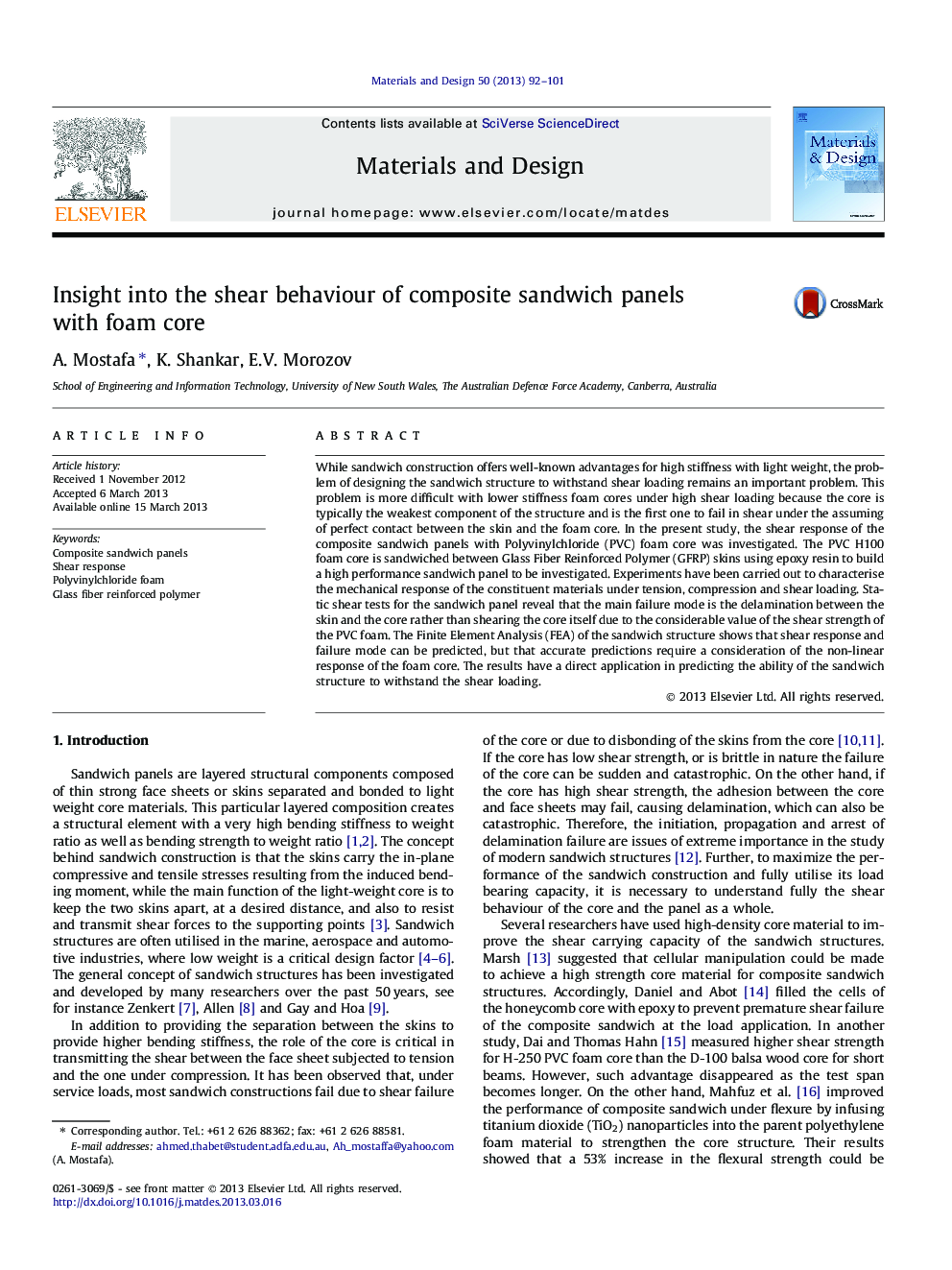| Article ID | Journal | Published Year | Pages | File Type |
|---|---|---|---|---|
| 829917 | Materials & Design (1980-2015) | 2013 | 10 Pages |
•Capturing the mechanical response of the constituent materials and sandwich panel.•Describing experimentally the failure mode under shear load.•Build the FE models of the constituent materials under different loads.•Establish the FE model of the sandwich panel under shear load.•The possibility of using the proposed model in the upcoming research.
While sandwich construction offers well-known advantages for high stiffness with light weight, the problem of designing the sandwich structure to withstand shear loading remains an important problem. This problem is more difficult with lower stiffness foam cores under high shear loading because the core is typically the weakest component of the structure and is the first one to fail in shear under the assuming of perfect contact between the skin and the foam core. In the present study, the shear response of the composite sandwich panels with Polyvinylchloride (PVC) foam core was investigated. The PVC H100 foam core is sandwiched between Glass Fiber Reinforced Polymer (GFRP) skins using epoxy resin to build a high performance sandwich panel to be investigated. Experiments have been carried out to characterise the mechanical response of the constituent materials under tension, compression and shear loading. Static shear tests for the sandwich panel reveal that the main failure mode is the delamination between the skin and the core rather than shearing the core itself due to the considerable value of the shear strength of the PVC foam. The Finite Element Analysis (FEA) of the sandwich structure shows that shear response and failure mode can be predicted, but that accurate predictions require a consideration of the non-linear response of the foam core. The results have a direct application in predicting the ability of the sandwich structure to withstand the shear loading.
